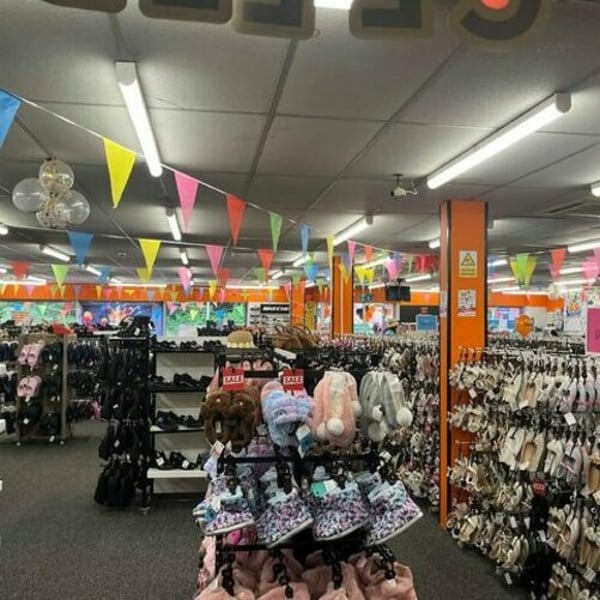Fashion
UK business optimism rises in July on manufacturing rebound

Recent trade agreements could be a driver of this uptick for manufacturing optimism. However, headwinds including weak GDP growth, high labour and energy costs and ongoing uncertainty surrounding future global trade policy continue to weigh on confidence, BDO said in its latest monthly Business Trends report.
UK business optimism rose to 91.96 in July, led by a manufacturing rebound, BDO reported.
New trade deals lifted sentiment, but weak GDP growth, high costs, and trade policy uncertainty weigh on confidence.
Output remains muted, and employment hit a near 13-year low, with hiring constrained by rising costs.
BDO sees fragile recovery and persistently low employment through 2025.
BDO’s output index also edged down to 97.79 in July from 98.05 in June, signalling sustained yet muted growth below historic levels. Although new trade deals are showing promise, this has yet to unlock meaningful investments for businesses. Margin pressures remain acute, and companies are still holding back amid uncertainty.
Against this backdrop, the BDO Employment Index fell to 94.11 in July, matching its lowest reading since October 2012. This near 13-year low reflects a marked cooling in the labour market, with declining payrolled employee numbers and falling vacancy rates contributing to subdued hiring sentiment.
While there are survey-based signs of modest improvement in near-term recruitment plans for manufacturers, the structural pressures remain acute across all sectors. Higher employer National Insurance Contributions and April’s rise in the National Living Wage have tightened labour budgets, and businesses are preparing for further cost exposure ahead of the Autumn Statement, BDO said in a press release.
With economic analysis behind the Business Trends report forecasting an unemployment rate peak at 4.9 per cent later this year, there is limited scope for a meaningful recovery in employment conditions. BDO expects the employment index to remain at historically low levels for the rest of 2025.
“There are signs of recovery, but they are fragile. Manufacturers may be breathing a little easier in the wake of trade deals, but their output is yet to catch up,” said Scott Knight, head of growth at BDO. “Business leaders are stuck in limbo, waiting for clearer signals from the government that further investment will be worth the gamble.”
Fibre2Fashion News Desk (SG)
Fashion
Mielle becomes NFL’s first textured haircare partner

Published
December 1, 2025
Textured haircare brand Mielle has launched a new partnership with the National Football League, marking the League’s first collaboration with a textured haircare company.
The campaign aims to support the millions of NFL fans with textured hair—women now make up about half of the NFL’s fanbase—while addressing the unique hair challenges faced by athletes wearing helmets, including dryness, breakage and frizz.
The partnership expands Mielle’s growing footprint in professional sports and is designed to boost representation, access to high-quality care, and product innovation for textured-hair athletes and fans.
“The NFL is excited to have Mielle, a brand that is committed to performance, community, and empowering fans and athletes, lean into the NFL partnership” said Tracie Rodburg, SVP global partnerships, NFL.
“This partnership aligns with the league’s mission to build lasting connections within our communities nationwide and celebrate the self-expression of our players and fans.”
The P&G brand says the collaboration gives Mielle a major platform to showcase the performance of its dermatologist-reviewed, Skin Health Alliance–accredited formulas under real athletic conditions.
“We’re honored to be the first textured hair care partner of the NFL through our partnership with P&G,” said Monique Rodriguez, founder and CEO, Mielle. “For so many of us, football represents family and community. It’s attending cookouts, tailgates, reconnecting with family and friends, and showing up in your favorite team colors. And for millions of fans, that includes twisting, braiding, and caring for your textured hair before kickoff.”
The announcement is accompanied by a social-first campaign, including the viral “Passing the Phone” video moment featuring talents across the league from including players, executives and agents, to players’ families and on-air talent.
Copyright © 2025 FashionNetwork.com All rights reserved.
Fashion
India’s logistics push puts fashion in the fast lane

The government’s three-year scorecard backs this up. Since its launch in September ****, ULIP has integrated more than thirty logistics and customs systems and clocked over *.* billion (***+ crore) API transactions as of around August ****, effectively treating data flows like rails. LDB, operational since July ****, has cumulatively tracked over ** million EXIM containers across *** inland container depots (ICDs) by around August ****, turning container visibility from a premium add-on into the default. A Transportation Emissions Measurement Tool (TEMT), developed by IIM Bangalore and partners and endorsed by DPIIT, now gives exporters an ISO-*****-aligned way to report logistics emissions, so freight can sit alongside product footprints in sustainability dossiers.
From Map to Mill Gate: What Gati Shakti Has Actually Changed
Fashion
Modella eyeing another acquisition, this time it’s the Wynsors footwear chain

Published
December 1, 2025
Modella Capital is fast becoming one of the most acquisitive businesses on the UK high street and the latest retailer in its sights is footwear chain Wynsors World of Shoes.
That’s according to Sky News, which said the investment firm is targeting a takeover of the privately owned footwear retailer and is currently in “advanced talks”.
Wynsors trades from around 50 standalone shops across the north of England and Modella is now “the likeliest buyer” of the business, with expectations of a deal before the end of the year.
Modella was recently in the news as the buyer of Claire’s UK business. It also recently bought the non-travel locations of WH Smith (now renamed TG Jones) and owns Hobbycraft and The Original Factory Shop too. It had earlier hoped to add Poundland to its portfolio but missed out on that one.
Wynsors has been looking to sell for around two months and accountancy firm RSM had been hired explore interest from prospective bidders, Sky News said.
The chain trades from around 50 standalone stores and 40 concessions. It sells brands including Adidas, Skechers, Hush Puppies, Clarks, Nike, kickers and more. And although its sells footwear for women, men and children, it focuses particularly on school shoes.
Copyright © 2025 FashionNetwork.com All rights reserved.
-

 Sports1 week ago
Sports1 week agoWATCH: Ronaldo scores spectacular bicycle kick
-

 Entertainment1 week ago
Entertainment1 week agoWelcome to Derry’ episode 5 delivers shocking twist
-

 Politics1 week ago
Politics1 week agoWashington and Kyiv Stress Any Peace Deal Must Fully Respect Ukraine’s Sovereignty
-

 Business1 week ago
Business1 week agoKey economic data and trends that will shape Rachel Reeves’ Budget
-

 Tech6 days ago
Tech6 days agoWake Up—the Best Black Friday Mattress Sales Are Here
-

 Politics1 week ago
Politics1 week ago53,000 Sikhs vote in Ottawa Khalistan Referendum amid Carney-Modi trade talks scrutiny
-

 Fashion1 week ago
Fashion1 week agoCanada’s Lululemon unveils team Canada kit for Milano Cortina 2026
-

 Tech6 days ago
Tech6 days agoThe Alienware Aurora Gaming Desktop Punches Above Its Weight

















